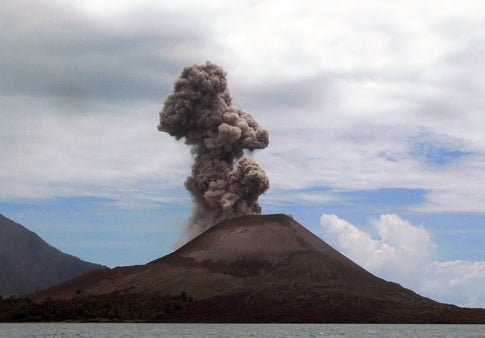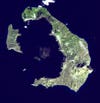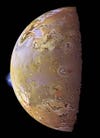Volcanic eruptions have altered global climate, and the global landscape, throughout history. In this new gallery, PopSci.com gives these ecological blockbusters their due.
10. Santa Maria
Santa Maria, and it’s sister volcano Santiaguito, blew up in one of the most powerful eruptions of the 20th Century. Thought at the time to have been dormant, the volcano exploded in 1902, throwing 20 billion cubic metersof debris into the sky above Guatemala. Some of that ash landed as far away as California. Since then, Santa Maria has been nominated as one of the International Association of Volcanology and Chemistry of the Earth’s Interior’s (IAVCEI) 16 “Decade Volcanoes”, that geologists constantly monitor due to their explosive power and proximity to population centers.
9. Changbaishan
The Changbai Mountains separate China from North Korea, and Baekdu (or Changbai) Mountain stands as the tallest of the range. An active volcano with a lake in its caldera, the most recent eruption came in 1903. However, the eruption in 1000 AD ranks as the largest, topping out at a seven of eight on the Volcanic Explosivity Index (VEI).
8. Crater Lake
The centerpiece of a national park in Oregon, the lake is actually the remains of a large volcano called Mount Mazama. Around 7,000 years ago, the then 11,000 foot tall volcano erupted in an explosion so large that it cut the height of the mountain by 2,400 feet.
7. Kikai
Now a string of islands at the southern-most end of Japan, Kikai caldera currently connects to four different volcanoes. And while the largest volcano, Mount Io, erupts continuously, these eruptions are small when compared to the 4350 BC eruption. That explosion created the caldera in the first place, and ranked a seven on the VEI scale.
6. Santorini
Another of the IAVCEI “Decade Volcanoes”, Santorini is located in modern-day Greece. Currently an archipelago, Santorini was once a single island, until an eruption in 1610 BC blew the volcano apart. Rating around a seven out of eight on the VEI scale, the eruption of Santorini weakened the Minoan civilization of Crete, and may even have inspired the myth of Atlantis.
5. Krakatoa
One of the most famous eruptions of all time, the August, 1883 Krakatoa explosion altered sunsets around the world, completely demolishing the Indonesian island. The eruption released nine cubic kilometers of magma. That’s enough lava to fill the University of Michigan stadium almost 40,000 times. In the 126 years since, subsequent eruptions have rebuilt the volcano, forming a new island.
4. Tambora
Like Krakatoa, Tambora is located in present-day Indonesia. Showing signs of eruption in 1813, and culminating in a giant blast in 1815, the volcano’s explosion was the largest of the modern era. The eruption launched 160 cubic kilometers of debris into the sky. That’s enough detritus to cover the entire island of Manhattan in a layer of ash a mile and a half thick. The eruption lowered global temperatures by as much as three degrees, resulting in the “year without summer”. Global food shortages also occurred, as the ash blotted out the sun. That winter, brown and red snow fell around the globe, and the bitter cold of 1815 indirectly resulted in Mary Shelley writing Frankenstein.
3. Lake Taupo
Currently buried under a lake in New Zealand, Taupo volcano has had two VEI level six eruptions during human history. However, it was the so-called Oruanui eruption of 26,000 years ago that really takes the cake. That eruption released enough lava to coat all of Europe in a two-inch thick layer of magma. The blast was so large, it took 17,000 years for the climate to return to pre-eruption conditions.
2. Lake Toba
What is it about Indonesia and globe-altering explosions? The largest volcanic lake in the world, Lake Toba was created by an explosion so large that University of Illinois professor Stanley Ambrose thinks it altered the evolution of mankind. He believes the resulting nuclear winter caused a drastic bottleneck in human evolution, reducing isolated populations so drastically that the resulting lower genetic diversity of the separate cohorts sped up the differentiation of humans into varying ethnic groups.
1. Io
Honestly, even the biggest volcanic explosion on Earth pales in comparison to the explosions on Jupiter’s moon Io. First observed by the NASA probe Voyager 1, these volcanoes explode so violently that the lava plumes can reach over 200 miles off the surface of the moon. This intense volcanism results from the moon’s liquid center being constantly disturbed by Jupiter’s immense gravitational pull.










